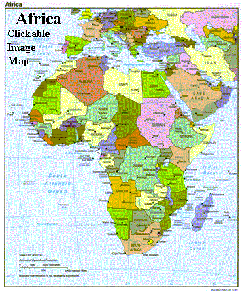In Aug. 1940, the territory responded with the rest of the AEF to the call from Gen. charles e Gaulle to fight for Free France. After WWII, the French constitution of 1946 inaugurated the first of a series of f reformsthat led eventually to complete independence for all french territories in western and equatorial Africa. In 1946, AllAEF inhabitants were granted french citizenship and allowed to establish local assemblies. The assembly in CAR was led by Barthelemy Boganda , a catholic priest who also was knon for his fortnight statements in the French assemblyon the need for African emancipation. In 1956, French legislation eliminated certain voting inequalities and provided for the creation of some organs of self-government in each territory. The french constitutional referendomof sept. 1958 dissolved the AEF and on dc. of the same year the assembly declared the birth of the Central african Republic with Boganda as head of govt.. Boganda ruled until his death in a March 1959 plane crash . His cousin , David Dacko replaced himuntil 1965 and overseeing the country's declaration of independence on 13 Aug. 1960.
Thursday, May 7, 2009
CAR, French Colonisation
In 1875 the Egyptian Sultan Rabah governed upper-Oubangui,which included present day CAR. Europeans, primarily the French , German, and Belgians, arrived in the area in 1885.French consolidated their legal claim to the area through an 1887 convention with Congo Free State, which granted France possessions of the right bankof the river Oubagui. Two years later the Frenchestablished an outpost at Bangui , and in 1894 , Oubangui-Chari became a French territory. However the french didnot consolidate their control over the area until 1903 and after having defeated the forces of the Egyptian Sultan Rabah and established colonial administration through out the territory. In 1906, \the oubangui-Chari territory was united with the Chad colony. In 1910, it becmae one of the four territories of the Federation of french equatorial Africa (AEF) , along ith chad ., congo( Brazzaville) , and Gabon. The next 30 years were marked by small scale revolts against French rule and the development of a plantationa-style economy.
